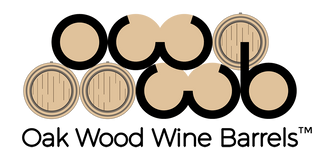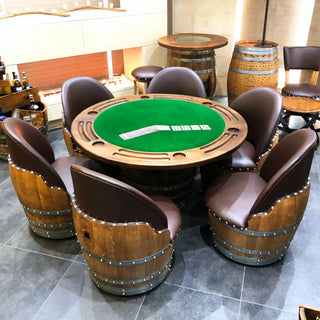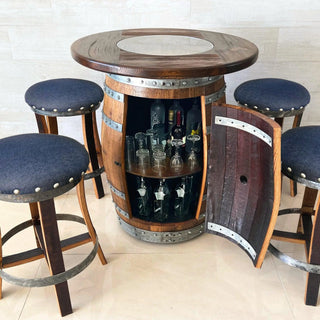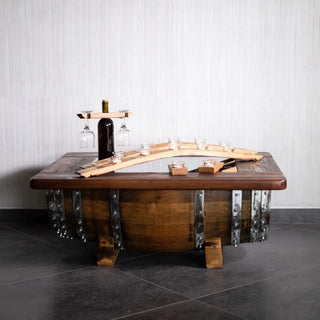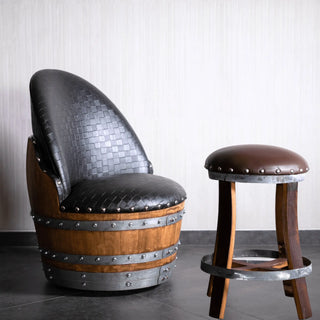
As wine lovers, we are all aware that the aging process is critical in determining the final flavor and aroma of our favorite bottles. However, many of us are unaware that the type of barrel used can have a significant impact on the end result. The level of charring on the inside of the barrel is one of the most important factors influencing the taste of wine aged in barrels.
Charring, for those who are unfamiliar, is the process of burning the inside of the barrel with a flame. This can be done to varying degrees, yielding various levels of char. In this blog, we'll look at the various types of charring that a barrel can experience and how it affects wine aging.
First, there's ""light char"" or ""#1 char"". The barrel is heated for a short period of time, usually around 15 seconds, to achieve the least amount of charring. White wines and lighter-bodied red wines, such as Pinot Noir, are typically charred lightly. The light charring will give the wine subtle vanilla and caramel notes, as well as a slight smoky flavor. This level of charring is also commonly used for aging spirits such as gin and vodka because it adds a slight smoky flavor without overpowering the base spirit.
Following that is ""medium char"" or ""#2 char"". With the barrel heated for about 30 seconds, this level of charring is slightly more intense than light charring. Red wines, such as Merlot and Shiraz, are commonly charred to a medium level. The medium charring will bring out more pronounced vanilla and caramel flavors, as well as a stronger smoky flavor. This level of charring is also commonly used for aging spirits such as bourbon and scotch whiskey because it adds a more robust smoky flavor that complements the base spirit.
Finally, ""heavy char"" or "#3 char" are options. This is the most intense level of charring, with the barrel heated for approximately 60 seconds. Heavy charring is common in full-bodied red wines like Cabernet Sauvignon and Syrah. The wine will have strong vanilla, caramel, and smoky notes from the heavy charring. This level of charring is also commonly used for aging spirits such as rum and brandy because it adds a robust smoky and caramelized flavor that complements the base spirit.
It's also worth noting that the degree of charring varies depending on the cooperage. The charring process is not a standard procedure, and the intensity and duration can vary depending on the cooperage.
Toasting is a type of charring that is similar to charring but has a less intense flame and a longer duration, usually 5-10 minutes. The toasting process is used to enhance the wine's complexity and flavor. The toasting process can add flavors such as nuts, bread, and toast to the wine and can vary from light to medium to heavy toast.
Finally, the type of charring that a barrel undergoes can have a significant impact on the final flavor and aroma of the wine. Light charring is typically applied to white wines and lighter-bodied red wines, whereas medium charring is applied to bolder flavors!
Charring, for those who are unfamiliar, is the process of burning the inside of the barrel with a flame. This can be done to varying degrees, yielding various levels of char. In this blog, we'll look at the various types of charring that a barrel can experience and how it affects wine aging.
First, there's ""light char"" or ""#1 char"". The barrel is heated for a short period of time, usually around 15 seconds, to achieve the least amount of charring. White wines and lighter-bodied red wines, such as Pinot Noir, are typically charred lightly. The light charring will give the wine subtle vanilla and caramel notes, as well as a slight smoky flavor. This level of charring is also commonly used for aging spirits such as gin and vodka because it adds a slight smoky flavor without overpowering the base spirit.
Following that is ""medium char"" or ""#2 char"". With the barrel heated for about 30 seconds, this level of charring is slightly more intense than light charring. Red wines, such as Merlot and Shiraz, are commonly charred to a medium level. The medium charring will bring out more pronounced vanilla and caramel flavors, as well as a stronger smoky flavor. This level of charring is also commonly used for aging spirits such as bourbon and scotch whiskey because it adds a more robust smoky flavor that complements the base spirit.
Finally, ""heavy char"" or "#3 char" are options. This is the most intense level of charring, with the barrel heated for approximately 60 seconds. Heavy charring is common in full-bodied red wines like Cabernet Sauvignon and Syrah. The wine will have strong vanilla, caramel, and smoky notes from the heavy charring. This level of charring is also commonly used for aging spirits such as rum and brandy because it adds a robust smoky and caramelized flavor that complements the base spirit.
It's also worth noting that the degree of charring varies depending on the cooperage. The charring process is not a standard procedure, and the intensity and duration can vary depending on the cooperage.
Toasting is a type of charring that is similar to charring but has a less intense flame and a longer duration, usually 5-10 minutes. The toasting process is used to enhance the wine's complexity and flavor. The toasting process can add flavors such as nuts, bread, and toast to the wine and can vary from light to medium to heavy toast.
Finally, the type of charring that a barrel undergoes can have a significant impact on the final flavor and aroma of the wine. Light charring is typically applied to white wines and lighter-bodied red wines, whereas medium charring is applied to bolder flavors!
Interested in shopping for wine barrel furniture? You can browse our full collection of items ranging from coffee tables to home bar and game sets here!
www.obarrel.com/collections
www.obarrel.com/collections
